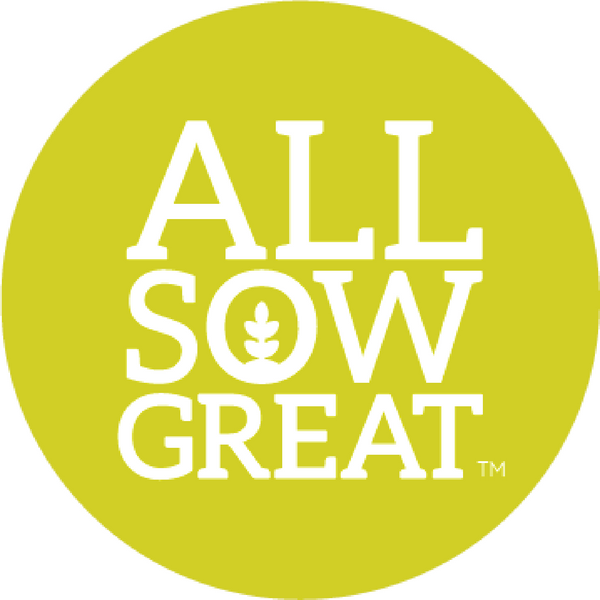Rising Gluten-Free Awareness in India
A gluten-free lifestyle is gaining traction across India whether for those with celiac disease, gluten sensitivity, or simply health-conscious eaters. However, this movement is not new. For centuries, Indian kitchens have relied on naturally gluten-free ingredients: lentils, rice, and especially millets. The resurgence of ancient grains like jowar (sorghum), ragi (finger millet), and bajra (pearl millet) is at the forefront of a new health revolution, championed by brands like All Sow Great from Maharashtra.
As consumer demand grows for nutrition-rich, allergy-safe, and sustainable foods, India’s gluten-free options blending tradition and innovation offer a diverse and delicious landscape worth exploring.
Why Millets Are Naturally Gluten-Free
Millets, a family of small-seeded grasses widely cultivated in India, are free from gluten, the protein found in wheat, barley, and rye. They are safe for those with celiac disease, gluten intolerance, or allergies, and feature prominently in both rural diets and urban health trends.
Nutritional Edge
- High Fiber: Nearly double the dietary fiber of rice and comparable to whole wheat; supports digestive health and satiety.
- Protein: Contains 7–13g protein per 100g millets like foxtail and proso millet are protein-rich, and offer essential amino acids such as lysine, methionine, and cysteine, which wheat lacks.
- Minerals & Micronutrients: Exceptionally high in calcium (ragi: 344mg/100g) and iron (pearl millet: 5–6.5mg/100g), plus zinc, phosphorus, B vitamins, and antioxidants.
- Glycemic Control: Slow-release carbohydrates help manage blood sugar levels ideal for diabetics and heart health.
Top 8 Gluten-Free Indian Foods & Snacks
Here’s a curated list of traditional and modern gluten-free snacks, highlighting millet-based options :
1. All Sow Great Millet Flakes (Jowar, Ragi & Bajra)
- Modern Indian Breakfast—heart-friendly, high fiber, and easy to serve with milk or yogurt
- Nutritional Benefits: Rich in dietary fiber and micronutrients; promote satiety, gut health, and heart function
- Regional Origin: Maharashtra (locally sourced, supporting farmers)
- How to Enjoy: As breakfast cereal, in smoothie bowls or make delicious savory Poha.
2. Millet Chivda (All Sow Great Savory Millet Mix)
- Light & Crunchy Snack—baked, not fried; blends jowar, bajra, and spices
- Health Perks: Fiber-rich, low-fat, supports weight management
- Regional Association: Popular Maharashtrian tea-time snack
4. Bajra Bhakri and Jowar Bhakri
- Traditional Flatbread—made from bajra flour, high in fiber and essential minerals
- Health Benefits: Sustains energy, lowers cholesterol, supports digestion
- Cultural Roots: Gujarat, Rajasthan, Maharashtra
5. Ragi Dosa
- South Indian Staple—crispy dosa made from ragi flour instead of rice or wheat
- Nutritional Edge: High calcium and antioxidants, gluten-free, good for diabetics
- Region: Karnataka, Tamil Nadu
6. Dhokla
- Gujarati Snack—steamed cakes made from chickpea and rice flour
- Benefits: Fermented, improves gut health, vegetarian, light on calories
7. Besan (Chickpea) Chilla
- Pan-Indian Savory Pancake—made with besan (gram flour), veggies and spices
- Nutritional Value: High protein, good source of fiber
- Region: North India
8. Makki di Roti
- Punjabi Classic—flatbread made from cornmeal
- Benefits: Gluten-free, high in antioxidants, traditionally paired with saag
Common Misconceptions About Gluten-Free Diets in India
Indian food is mostly wheat, so gluten-free is hard here- False! India’s cuisine is inherently rich in gluten-free ingredients: rice, millets, lentils, and scores of regional breads.
Gluten-free means low carb or bland- Not true. Gluten-free foods can be high in healthy, complex carbohydrates and are flavorful thanks to Indian spices, cooking styles, and local ingredients.
Only celiacs need gluten-free diets - Wrong. Celiac disease affects ~1% of Indians, but many experience non-celiac gluten sensitivity or wheat allergies, benefiting from gluten avoidance.
Millets are only for rural or poor communities - Outdated! Millets are now prized ‘superfoods’ at health-forward urban restaurants, in high-performance diets, and by brands like All Sow Great.
Gluten-free automatically means weight loss- No, weight management depends on overall diet quality, calorie balance, and portion control. Millets help with satiety and healthy weight.
Updated Statistics: Millets & Gluten-Free India (2024–2025)
- Millets cover 10%+ of India’s total cereal cultivation; 2024 designated as the International Year of Millets
- Market growth: Indian gluten-free packaged snacks sales forecast to grow 18–22% CAGR by 2026
- Health impacts: Millets consumption linked to lower rates of obesity, diabetes, and heart disease in recent peer-reviewed studies
- Awareness: Gluten-free needs (celiac + sensitivity) now acknowledged by FSSAI and major hospitality chains
- Urban adoption: Major urban centers (Mumbai, Bangalore, Delhi) see growing millet cafe culture and specialty stores.
Ready to Try Gluten-Free, Millet-Powered Goodness?
Explore the All Sow Great collection today at www.allsowgreat.com and join thousands discovering the true taste and benefits of gluten-free Indian foods. Whether for celiac disease, healthier eating, or pure culinary joy, millets once rediscovered never go out of style.


